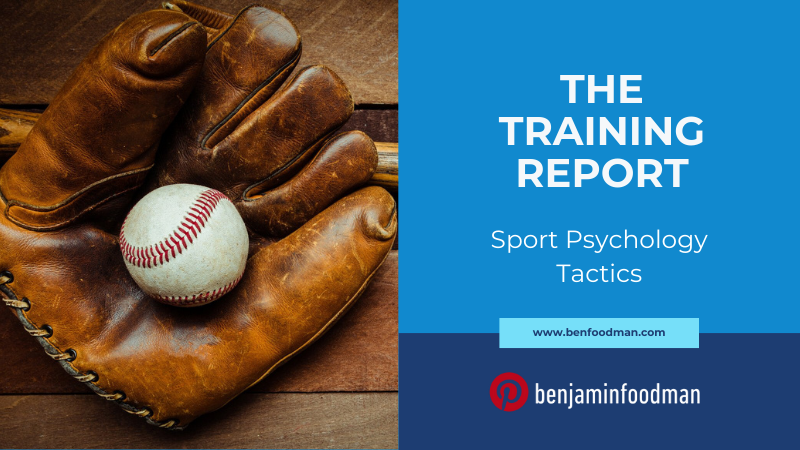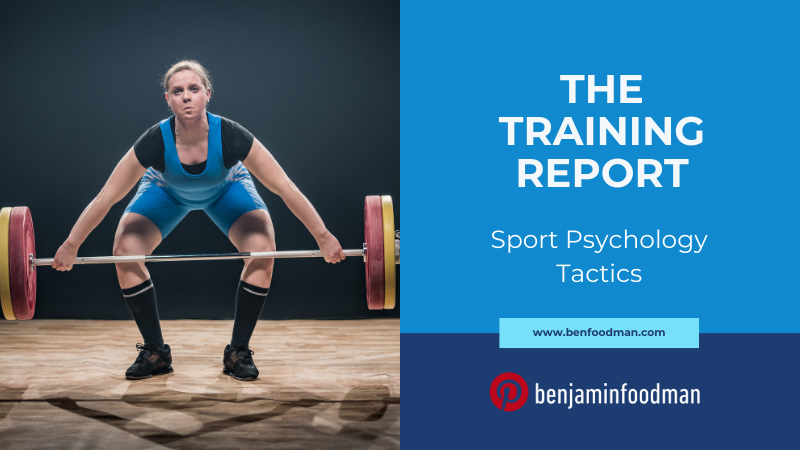Sport Psychology Tactics - How Athlete Mental Therapists Use Exercise Psychology To Enhance Motorsport, NASCAR & Racecar Driver Performance
About the Author
Ben Foodman is a licensed psychotherapist & performance specialist. He owns his private practice located in Charlotte North Carolina where he specializes in working with athletes to help them overcome mental blocks (the yips), PTSD, ADD / ADHD and achieve flow states through the techniques of Brainspotting & Neurofeedback. If you are interested in services, use the link here! Enjoy the article below!
Introduction: Why Sports Mental Therapists Use Exercise Psychology To Enhance Motorsport Athlete & Racecar Driver Performance
The mental and physical demands placed on motorsport athletes is unlike anything across different athletic competitions. Whether you are a driver in the promotions of NASCAR, Indy 500, Motul Petit Le Mans and even Formula racing, the majority of drivers spend incredible amounts of time training both their mind and body to be ready for the stress that comes with racecar driving. While many of these drivers have access to sport psychologists and strength & conditioning specialists, these professionals usually operate in a ‘silo’ and have not found an efficient way to integrate their work in a cohesive way for the athlete.
However, there is now a growing movement of sport psychologists that are utilizing the science of exercise psychology to enhance motorsport athlete performance. Because there are many racecar drivers who may not have access to the same resources as drivers that are part of the Chevrolet or Toyota driver development programs, I wanted to use this issue of the Training Report to explore how drivers can utilize exercise psychology for their performance. In part I., I will discuss why drivers need to use exercise psychology, in part II. I will review the neuroscience of exercise psychology, and in part III. I will review exercise psychology strategies drivers can use. Let’s get started!
Part I. Why NASCAR & Motul Petit Le Mans Racecar Drivers Need Exercise Psychology For Mental Performance
I have been fortunate to work with racecar drivers from many different promotions such as NASCAR and other competitions. One of the things that I learned very early on in my work with these athletes was how important it was for them to select exercises that helped prepare their bodies for the physical demands of racecar driving. While this may seem obvious, there are a significant amount of motorsport athletes that either do not know this or do not have access to the same high level resources as other drivers. As such, they are left to utilize a ‘DIY’ approach that is largely absent of the necessary science to sharpen their skills. However, as impressive as the different driver performance enhancement centers are, like the majority of sports medicine and human performance facilities they lack the knowledge or the personnel to integrate the psychological training with the physical. There are several reasons for this.
First, Certified Strength & Conditioning Specialists and exercise science personnel are focused on developing their knowledge about how the body responds to the stress demands of sport…but they do not have advanced psychological training on how the brain functions in high stress situations. Second, most sport psychologists and athlete mental therapists understand certain things about focus and concentration, but have a very poor understanding about how the body responds to the pressure of physical training. This gap in knowledge means that most sports medicine teams (especially drivers without access to these resources) are unable to tailor programs that emphasize the mind-body connection. But selecting exercises for professional racecar drivers with an emphasis on exercise psychology is arguably one of the most critical factors in their performance because racecars exert incredible amounts of stress on the body which in turn affects the driver’s decision making.
Before we dive into what is happening in the brain during the stress-test of driving and exercise, we first need to understand what is happening to the athlete in the car. Oftentimes after my clients have finished a race, they will send me their biometric data that was recorded during their driving performance. On average, drivers burn anywhere between 2000-5000 calories throughout a race. Why is this the case? First, the intense heat inside the car puts incredible strain on the body. We know from psychological research that when people remain in a baseline state, our brains on average consume around 25% of all energy reserves in our body despite our brains only encompassing about 2% of our total bodyweight…that’s basically ‘keeping the lights on’. When you start introducing the psychological strain that is placed on drivers during racing, the energy consumption goes up. The information processing that the brain undergoes in addition to the physical strain of heat within the car, followed by static muscle positions when holding the steering wheel in the cockpit extract significant amounts of energy and stress the cardiovascular system. Additionally, most if not all drivers experience collisions or crashes during races which can result in head trauma and concussions. So how does all of this affect the brain of an elite racecar driver?
Part II. The Neuroscience Behind Exercise Psychology & Motorsport Athlete Mental Performance
When racecar drivers experience either continuous stress in the cockpit (e.g. high heat temperatures, confined space that limits movement and constricts the body, etc.) or shock trauma events (e.g. car crashes, seeing colleagues crash or become seriously injured), the driver’s brain becomes at increased risk for remaining in a hypervigilant state. In the book This Is Your Brain On Sports by David Grand, the author goes into great detail to explain the neuroscience behind the sports-related stress and how the brain responds to stress events. The author describes as follows ‘In parallel fashion, the brain attempts to always move toward a state of psychological equilibrium. Over the course of our lives, we are exposed to a variety of life experiences, some positive, some neutral, and some negative. Through a natural assimilation process, the brain adaptively processes these experiences so they are constructively integrated. What is useful from the experience is learned and stored in the brain with the appropriate emotion and is available for future use. When an experience is successfully assimilated or digested it is stored in the brain with little attached intense emotion or physical sensation. When we recall such an incident, we don’t reexperience the old emotion or sensation with it. In this way we are informed by our past experiences and memories but not controlled by them and with sports our present athletic performances are not burdened by emotional or physical baggage from the past, only learned experience. By contrast, trauma or any strongly negatively charged experience isn’t adequately assimilated or processed. Instead, the upsetting incident remains stuck in the system in broken pieces’.
The author continues, ‘ The body instantly memorizes the physical experience of the trauma in exquisite detail, including the body sensations of the impact and pain, along with the associated sights, sounds, smells and tastes. The attached emotions and where they are felt in the body are frozen as well. The brain is overwhelmed and instead of getting digested, all of the information attached to the injury, including the negative thoughts is stored in the brain in exactly the same form it was initially experienced. Days, week, months or even years later when the athlete is in a situation reminiscent of the original trauma or experiences prolonged stress, the upsetting experience may be unconsciously activated, thus interfering with the performance of the moment. These components represent all of the sensory details from the earlier event that were frozen in the brain and body in their original disturbing state: the images, lighting, emotions, physical movements, sounds, or smells. The unique sensory details later returning to consciousness cause the performance disrupting symptoms so common in mental blocks.’ So keeping in mind that the brain has a predictable set of mechanisms that will be activated once the athlete has exceeded their stress-threshold capacity, what exercise psychology science do we need to focus on to help athletes increase? In my opinion the answer lies in focusing on HRV training combined with prehab focused exercises. Let me explain further.
Typically when training HRV from a sport psychology perspective, we tend to focus on the larger impact that the autonomic nervous system has on athlete’s mental performance. Dr. Stephen Porges, one of the more well-known experts within the field has made groundbreaking discoveries and provided excellent descriptions about how this system works. Per his website, the following quote illustrates important characteristics of this system, “The mind and body are connected through the Vagus nerve, the longest nerve in the autonomic nervous system, stretching from the brainstem to the colon. It is our internal control center, allowing the brain to monitor and receive information about many of our bodily functions”. We know from research that if left unchecked, athletes and other individuals with low HRV have issues associated with mortality, myocardial infarction, coronary heart disease, and congestive heart failure. When sport psychologists help enhance HRV, HRV in this case is associated with improved autonomic nervous system balance. Research on athlete populations shows that when these benefits are gained, athlete sport performance outcomes improve while also reducing the risk of complex motor skills from being compromised. In regards to sport psychologists focusing on Prehab-based exercises instead of your bread and butter ‘bro-science’, research seems to suggest that athlete injury rates decrease while also helping increase long-term health outcomes. Let’s dive deeper into what this means and what drivers can do about it in part III.
Part III. Exercise Psychology Strategies NASCAR, Motul Petit Le Mans Motorsport Athlete & Racecar Drivers Can Use
There are many different definitions and interpretations of what ‘prehab’ is. In the book The 4-Hour Body by Timothy Ferris the author quite simply defines prehab as ‘injury-proofing- the body. You could make the argument that all strength & conditioning is ‘injury-proofing’ the body, but when speaking with different exercise science professionals and biomechanists, most of these individuals consider prehab to be a combination of strength training with physical-therapy style focused exercises. In Mr. Ferris’s book, he provides an example of how prehab specialists think about this issue: According to Gray the most likely cause of injury is neither weakness nor tightness, but imbalance. Think doing crunches or isolated ab work is enough to work your core muscles? Think again. ‘The core, as just one example, often works find as long as one’s hips aren’t moving. It’s when the hips are moving-a more realistic scenario-that the core starts to compensate for left-right differences.’ That’s when you get injured.
Other experts in the field provide similar content to support the need to focus on these types of interventions. In the book Becoming A Supple Leopard by Dr. Kelly Starrett, the following excerpt provides additional rational for this type of thinking: Prioritizing spinal mechanics is the first and most important step in rebuilding and ingraining functional motor patterns, optimizing movement efficiency, maximizing force production, and avoiding injury. In order to safely and effectively transmit force through your core and into your extremities, you need to organize your spine in a neutral position and then crease stability throughout that organized system by engaging the musculature of your trunk, which is knowns as bracing. This is the basis of midline stabilization and organization. To oversimplify this, if you are a professional racecar driver and your body is in pain, aching or your HRV is not in a good state, your mental focus will be compromised and you will have a lot of disappointing performances. So what are specific strategies that can be implemented?
There are several exercise psychology strategies that all professional racecar drivers can use on a small budget where they will accrue the same (if not better) types of mental benefits that motorsport athletes get when training at the driver performance centers. Racecar drivers should focus on the following strategies and investing in some of the following resources:
Work with a sport psychologist that has training in biofeedback applications to train HRV.
If you are dealing with driving Yips, work with a sport psychologist or athlete mental coach that has training in EMDR or Brainspotting.
Focus on prehab-based exercises that emphasize keeping the body ‘even’. There are many exercise science professionals that are cost-effective that can help with this. Make sure that they are either CSCS certified or are Exercise Physiologists through NASM and the NSCA.
Focus on incorporating pelvic floor activation, core strengthening, and neck strengthening exercises.
Focus on utilizing proper hydration and nutrition tactics. This may mean that you will need to consult with a sport psychiatrist or a licensed nutrition specialist.
Do not avoid using heat training. Heat training is an ‘absolute must’ and every driver that I have worked with has experienced immense benefits from adding this into their routine.
Even if drivers do not use all of these methods, using one or several exercise psychology tactics can be a game changer for your mental toughness and focus! If you would like to learn more, use the link here!
Note To Reader:
If you are an athlete reading this segment of the TRAINING REPORT, hopefully this content was helpful! I put the Training Report together because I felt like many of the discussions on issues such as the Yips/mental blocks, strength training & other subject matter on athlete performance concepts were really missing the mark on these ideas (e.g. how trauma is the direct cause of the Yips). If you are interested in learning more, make sure to subscribe below for when I put out new content on issues related to sport psychology & athlete performance! Also, if you are looking to work with a mental performance specialist, you are in the right place! USE THIS LINK to reach out to me to see if my services are the right fit for your goals!
ARE YOU ON THE LIST?
Make sure you’re signed up to Ben’s mailing list to receive news & updates on new strategies in sport psychology, upcoming workshops & products. Don’t wait, sign up now!




















































































